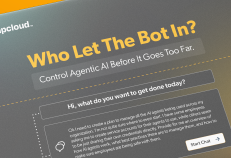We’ve all been told that “identity is the new perimeter.” But most organizations have only focused on building a really strong front door. They forget they need to patrol the grounds inside as well.
Once a user is authenticated, security visibility often drops to zero. This post-login blind spot is where modern attacks thrive and internal threats can fester. Malicious actors move between systems, elevate privileges, and exfiltrate data. But to you they appear as legitimate, trusted users.
This is why JumpCloud is excited to welcome the Breez team and their pioneering technology. This collaboration accelerates JumpCloud’s investment in ITDR. We’re bringing their incredible talent and technology to our team, leading to faster innovation within our core security data products.
A successful security strategy must go beyond the login screen. It needs to track and secure everything that happens after a user authenticates. To combat these multi-faceted threats, you must shift your focus. You have to move from simply managing access to implementing a robust Identity Threat Detection and Response (ITDR) strategy. And one that operates in real-time across your entire environment.
Your Blind Spot is Detection at Runtime
Your Identity Provider (IdP) is great at stopping threats at the front gate. It successfully validates credentials and enforces multi-factor authentication (MFA). But in a modern environment, the security challenge doesn’t end when the gates open; it only begins.
For most large organizations, security literally stops at the login screen. Your IdP focuses on prevention: Is the user who they say they are? But it often lacks the intelligence to answer the far more complex question: Should this user (or identity) be doing this, right now, in this context?
Once the user is authenticated, the system often lacks real-time, correlated visibility into subsequent actions. This could be within third-party Cloud services (AWS, Azure) or critical SaaS applications (Salesforce, GitHub). This gap isn’t just a visibility issue; it’s a deficit in continuous, context-aware risk assessment.
Which is why external attackers are no longer trying to hack their way in; they are logging in. They exploit vulnerabilities like weak credentials, often targeting non-human service accounts that lack multi-factor authentication (MFA). This lets them gain initial access and move silently across your infrastructure in plain sight.
Meanwhile, internal threats can be just as damaging. A well-meaning but careless employee might unknowingly download sensitive data or grant excessive permissions. What they did was wrong, but your security systems may not see anything other than legitimate behavior.
Both scenarios bypass traditional perimeter defenses, highlighting a critical gap in modern security. The devastating result of this blind spot is the slow pace of recovery. Our approach transforms this visibility gap into an intelligence layer. This layer provides continuous, unified, and context-aware risk assessment for every identity and every action.
The Reliance on (and Risk of) Non-Human Identities
The future of your workforce is a combination of identities.
The rise of automation, microservices, and AI means the identity challenge is no longer just about your human employees. It is dominated by machine users. The most critical challenge in modern security is the explosion of non-human identities (NHIs). These are the service accounts, API keys, workloads, and bots that drive your automation and cloud infrastructure.
It’s a hybrid approach of human and robot creating the core of your “employees”.
And non-human identities (NHIs)—things like API keys, service accounts, and bots—now outnumber human users by 50 to 1 in large organizations. They are the prime target for initial access and lateral movement.
These NHIs are essential for operations, but they pose a massive risk. They lack the basic security controls applied to human accounts, such as MFA and defined owners. Research shows that four of the five largest data breaches in 2024 were attributed to compromised credentials for accounts that lacked multi-factor authentication. This is a problem acutely tied to non-human and service accounts.
The solution to this is to create an identity fabric. An intelligent layer to your approach to govern all types of identities. As your workforce expands and changes, this allows organizations to specify the best controls for the right context.
Why Security Leaders are Losing The Response Race
Even when security teams catch a threat, they often lose the race against time.
When an alert fires, security operations center (SOC) teams are always faced with alert fatigue. They have to manually correlate logs from several disconnected systems—the identity provider, the cloud security tool, the SaaS platform—just to understand the attack path.
This manual triage is slow, resource-intensive, and prone to error.
Attackers move in minutes. Your manual processes take hours. In fact, organizations take an average of 162 hours (nearly seven days) to detect, triage, investigate, and contain a cyber incident. This gap is the difference between an anomaly and a catastrophic breach.
Now let’s play a game you can actually win, by taking an automatic approach. One that understands the context of your environment, users, and their permissions. By automatically applying updates in real-time, you can take identity-based actions instead of playing catch up.
JumpCloud Acts to Close the Security Gaps
The challenges you face today are the highest they have ever been. You face the disappearance of the network perimeter, the explosion of non-human identity risk, and the failure of slow, manual response processes.
If you want to beat modern attackers, you need to shift your focus to solutions that offer real-time detection. This is especially so after a user—or a machine identity—logs in successfully. Look for tools that track every single identity’s behavior across all your apps and clouds. They should use smart automation to instantly investigate and shut down threats, slashing the time it takes to contain a breach.
At JumpCloud, we recognize that our mission to secure your modern IT environment requires immediate, focused action to address these critical needs.
This acquisition, and the ensuing work to bring it into the JumpCloud platform, is our commitment to you: ensuring you have the tools and infrastructure required to win the new battle on the identity front.
The foundation of strong security lies in a Zero Trust strategy. Though often perceived as a buzzword, the principles forged within a Zero Trust approach to security are essential. You need to be able to layer in advanced techniques that can properly mitigate and shut down modern threats. Download our latest guide The Zero Trust Playbook You’ve Been Waiting For to better understand the pillars of Zero Trust. You’ll get a critical look at where you currently stand – and what you can do to close the gap.






